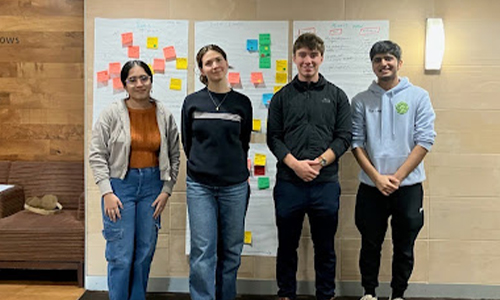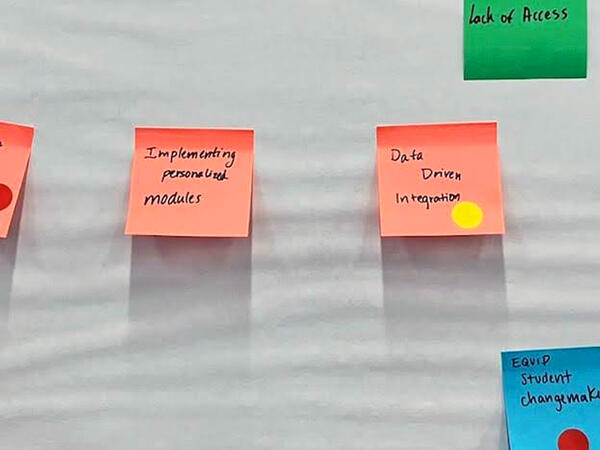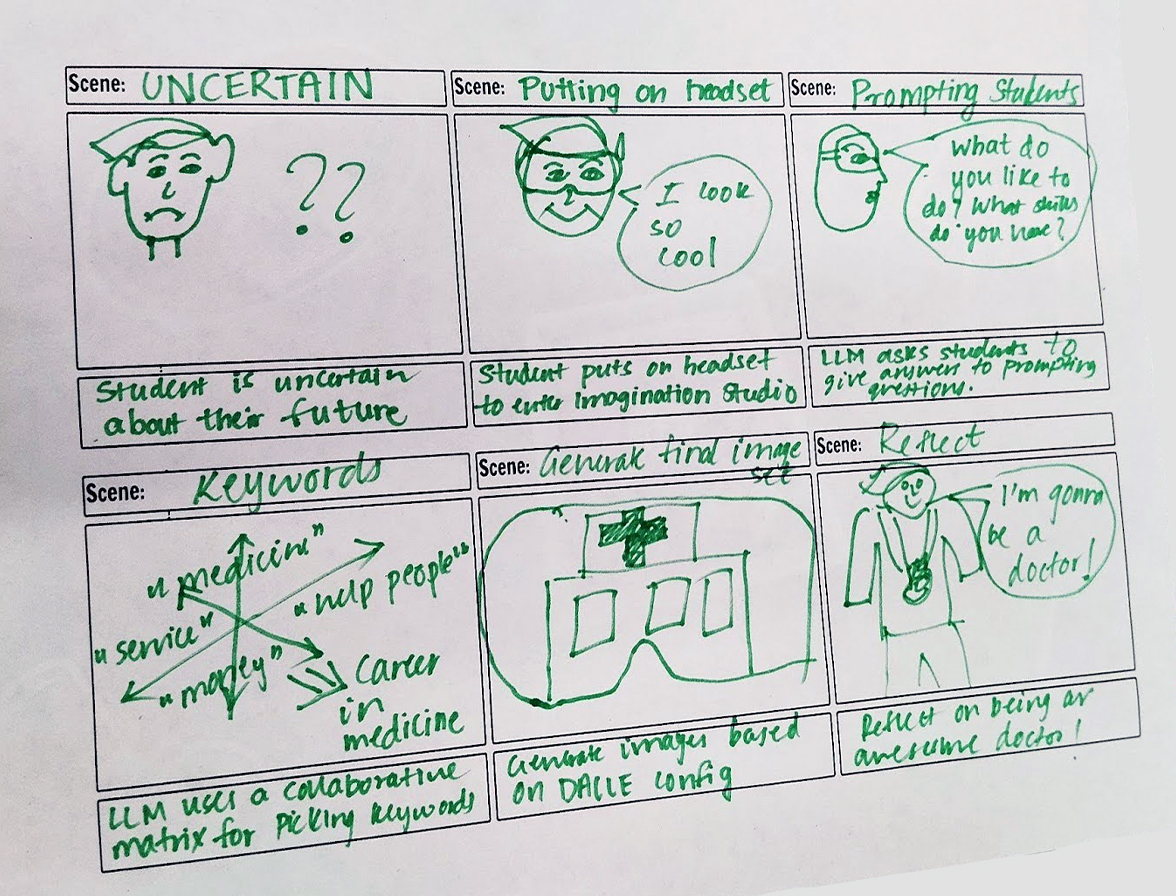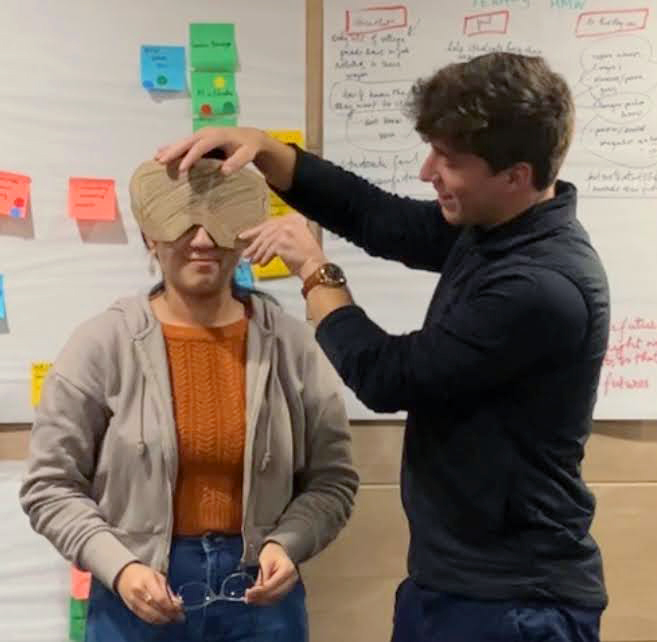
Education InnoVRsion
Presented by: Parkhi Malhotra (Graduate - Human Sys Eng (User Exp Res)), Aarav Matalia (Undergraduate - Computer Science), Caleb Lieberman (Undergraduate - Innovation in Society), Adelaide Randall (Undergraduate - Psychology)
Whats the problem?
Meeting your role models, chatting with experts, shaking hands with leading figures in your field -- all these remarkable opportunities have the potential to make a huge difference in someone's career trajectory and renew their excitement for their goals. But traditional learning environments are limited in how they can bring these experiences to learners. Funding, travel, scheduling, and other logistics are all major barriers.
So how can we motivate students and inspire confidence, helping transform "I can't do this" to "I can and I will"? Perhaps an innovative intersection of Virtual Reality (VR) and Artificial Intelligence (AI) could make this dream a reality.

But first...

How did our team get here?
Our team got together to reflect on issues we personally encountered as college students. One particular challenge that stood out was a shared experience of losing confidence in achieving our goals. On top of that, we also shared an interest in bringing recent technological advancements to education. As brainstorming began, we wondered how technology might help boost confidence for other students.
To understand the various stakeholders involved and their perspectives, we created an empathy map.
Once we decided that our issue would be biodiversity loss, we looked for examples in Arizona to keep our solution within the local context. This led us to the endangered Mount Graham Red Squirrel.
Our empathy map highlighted an alternative approach we decided against. We empathized with politicians, aiming for policies to protect wildlife and nature. However, politicians prioritize keeping stakeholders and benefactors happy, which often limits their actions. This understanding led us to realize that our solution would not be as effective from their perspective due to differing values.

Defining the problem
for a better solution
After successfully framing our problem, we began the ideation phase, where we generated ideas without any limitations. We wrote all our ideas on sticky notes and pasted them on white paper. In this phase, we did not constrain our solutions, considering all possibilities regardless of feasibility.
Next, during the idea prioritization phase, we categorized the generated ideas based on feasibility and impact. This process aimed to identify a solution with the highest impact and greatest feasibility.
Ultimately, this led us to choose the Habitat Protection Act as our focus solution idea.
The story
During storyboarding, our team thought about how VR and AI integration might look for students using it. It was at this stage that our team pinned down ideas for how this VR experience would work.
Students would be asked a series of questions about their interests, aspirations, and career goals. This would allow AI technology to create an interactive, three-dimensional, virtual environment for them to engage with. Inspirational figures would speak with the student, driven by AI chatbots. Our team hopes that such immersion would motivate and energize, inspiring them to achieve their goals.

The prototype
We began to create our prototype using existing VR headsets as a model. This physical technology would be powered by an AI model designed by our team for maximum immersion.


Meeting your role models, chatting with experts, shaking hands with leading figures in your field -- all these remarkable opportunities have the potential to make a huge difference in someone's career trajectory and renew their excitement for their goals. But traditional learning environments are limited in how they can bring these experiences to learners. Funding, travel, scheduling, and other logistics are all major barriers.
So how can we motivate students and inspire confidence, helping transform "I can't do this" to "I can and I will"? Perhaps an innovative intersection of Virtual Reality (VR) and Artificial Intelligence (AI) could make this dream a reality.